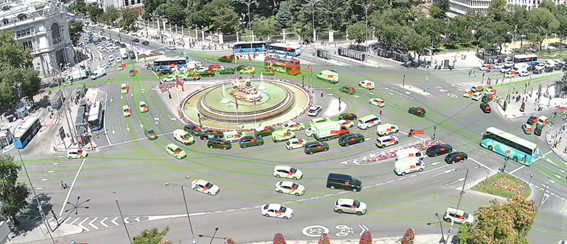Proper management of public lighting is an essential factor for the sustainable development of modern cities. As urban areas grow and face increasing energy demands, public lighting telemanagement systems emerge as indispensable tools for enhancing efficiency, ensuring safety, and optimizing public resources.
In this context, SIDERA Lighting, a telemanagement solution developed by SICE, stands out as one of the most advanced platforms on the market. Designed to remotely manage and monitor public lighting installations, it offers innovative capabilities that enable municipalities to achieve the highest standards in efficiency and sustainability.

The Importance of Efficient Public Lighting Management
Public lighting not only ensures nighttime visibility in streets, parks, and public areas but also directly contributes to citizen safety and quality of life. However, inefficient management can lead to high energy costs, increased maintenance expenses, and significant environmental impacts.
Advanced systems like SIDERA Lighting enable the remote monitoring, control, and management of public lighting installations, optimizing energy consumption and detecting potential faults or operational deviations early. Through detailed analysis of consumption data and self-management functionalities, these systems allow for significant energy savings and the most efficient use of lighting resources.
SIDERA Lighting was developed with two fundamental principles in mind:
- Modularity: Modules can be added or removed based on the real needs of the municipality.
- Scalability: The platform is fully functional for small, medium, and large municipalities alike.
Benefits of Telemanagement Systems for Public Lighting
Telemanagement systems provide key benefits for local administrations and citizens:
- Energy Efficiency: By dynamically regulating light intensity according to the real needs of each area, these systems significantly reduce energy consumption, aligning with sustainability goals and CO2 emissions reduction.
- Cost Reduction: Early fault detection and real-time data analysis minimize expenses associated with preventive and corrective maintenance, improving resource management.
- Enhanced Safety: The ability to adjust lighting levels in critical areas, such as pedestrian crossings, intersections, or parks, enhances safety for both pedestrians and vehicles, preventing accidents and improving the sense of security.
- Integration with Other Urban Systems: Telemanagement systems can connect with mobility platforms, traffic sensors, or surveillance systems, creating a more intelligent and efficient urban ecosystem.

Functional Architecture of Telemanagement Systems
The architecture of telemanagement systems like SIDERA Lighting is based on a modular and scalable structure, enabling adaptation to municipalities of any size. These platforms are composed of three main functional layers:
- Clients: Located at the control center or in locations with network access, clients view energy consumption data, receive alarms and events, and manage installation parameters.
- Servers: These store and process data received from control centers, sending it to the management system. They can operate locally (on-premise) or in the cloud, with the latter being the most cost-effective and flexible option.
- Control Centers: Equipped with network analyzers, controllers, and communication devices, these centers manage alarms and events while storing key electrical measurements.
This configuration allows for the adjustment of luminaires’ operating curves, tailoring lighting to the specific needs of each urban environment and achieving more efficient use of energy resources.
Visualization and Analysis of Energy Data
A standout feature of advanced platforms is their ability to offer detailed graphical information on key energy parameters, such as:
- Active power per phase.
- Comparative power over two consecutive periods.
- Apparent and reactive power.
- Current and voltage.
- Temperature to detect hot spots.
- Power factor.
Additionally, these platforms provide a comprehensive summary of energy consumption in real time and historical data, along with a comparative analysis between system-recorded consumption and the utility provider’s bill. This functionality helps identify discrepancies, optimize management, and ensure greater transparency in administration.

Towards a More Efficient and Sustainable Future
In the era of Smart Cities and Artificial Intelligence, telemanagement systems for public lighting are a cornerstone for achieving more sustainable, efficient, and safer cities. Their implementation not only contributes to energy savings and cost reductions but also improves the quality of services offered to citizens while reinforcing environmental commitments.
Investing in technology for public lighting management means investing in a future where cities are more livable, innovative, and responsible with their resources—a goal that undoubtedly benefits everyone.





